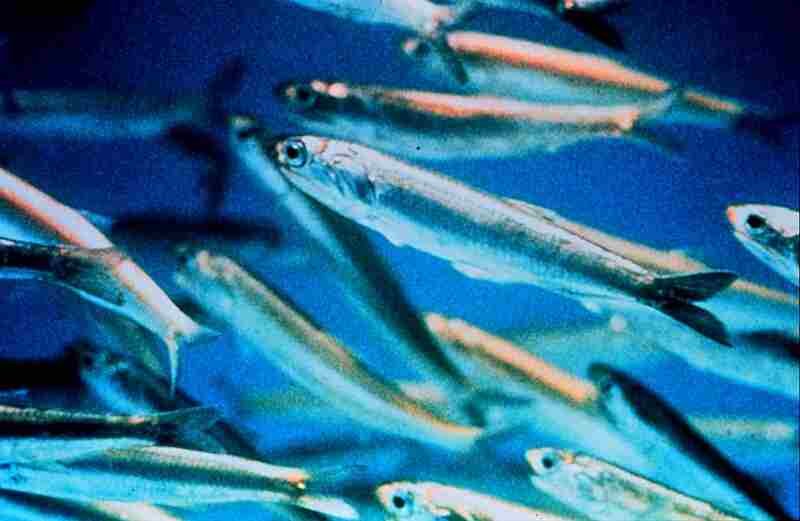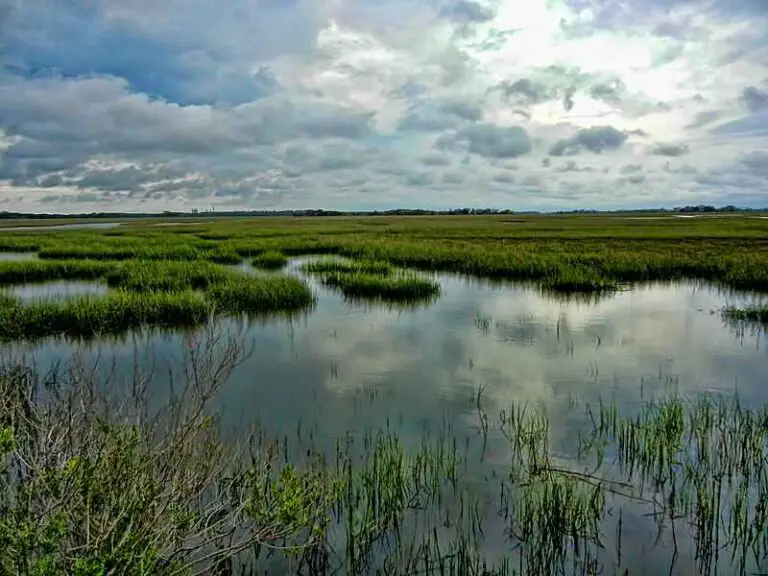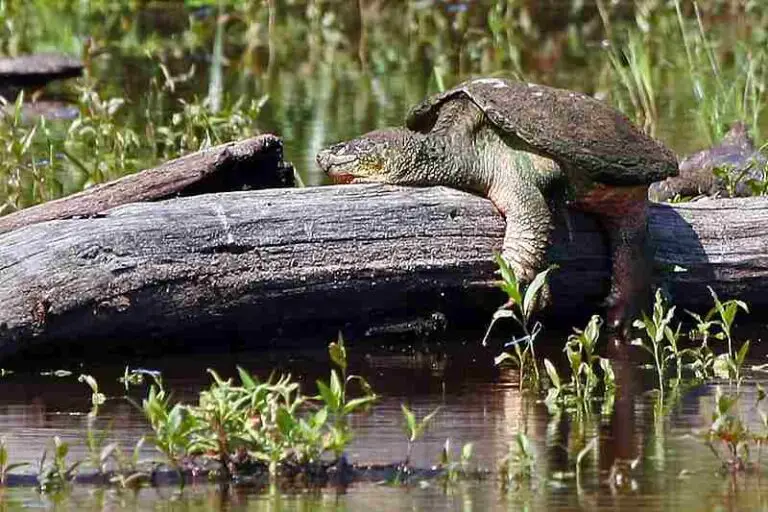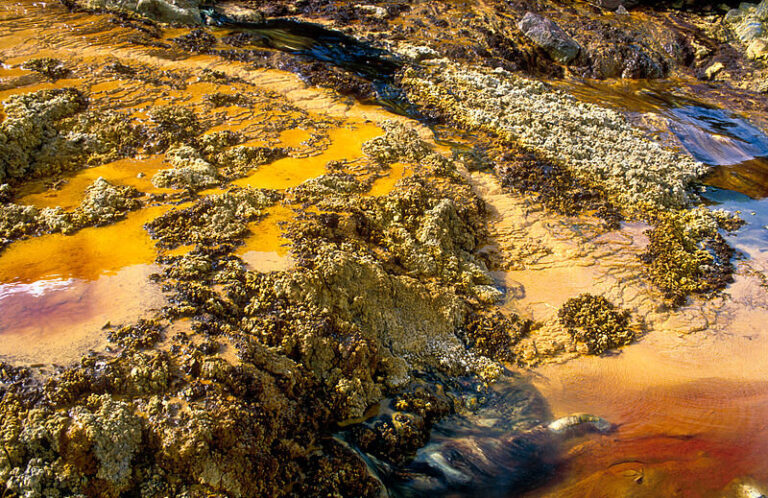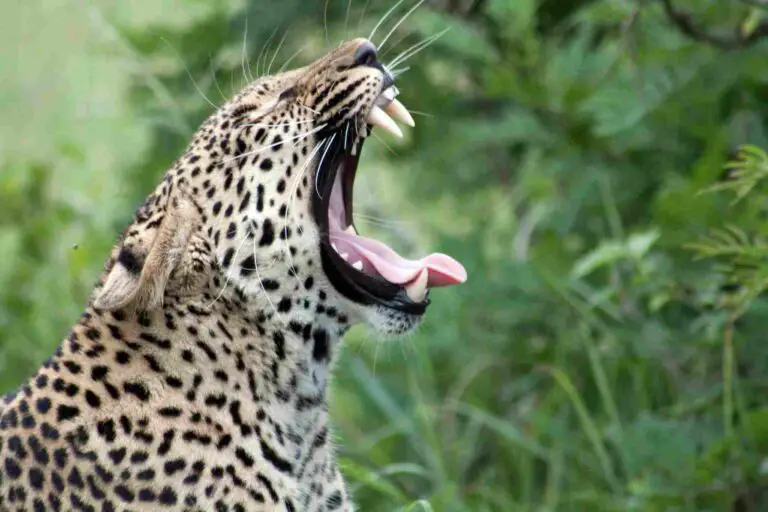Which Consumers Live in The Open Ocean? 7 Groups Discussed
Consumers that live in the open ocean or pelagic zone include zooplankton like krill, herbivorous fish like damselfish, small carnivorous fish like sardines, large carnivorous fish like sharks, mollusks like octopuses, mammals like dolphins, and reptiles like turtles. This article answers the question; which consumers live in the open ocean, as follows;
1). Zooplankton (as one of the Consumers that Live in the Open Ocean)
Zooplankton are a diverse group of small, drifting invertebrates found in aquatic ecosystems, including the open ocean.
They are very important as consumers in marine food webs, because they bridge the gap between primary producers (phytoplankton) and marine organisms in higher trophic levels, such as fish and aquatic mammals.
Zooplankton come in diverse morphologies (shapes and sizes), ranging from microscopic organisms to larger, macroscopic species. Some members of this group and their food sources are highlighted in this section (and its subsections).
Examples of Open Ocean Zooplankton
Examples of zooplankton in the open ocean are;; krill, copepods, jellyfish. salps, formaninifera, and pteropods. They are each briefly discussed as follows;
Krill (Euphausiids) are among the most well-known zooplankton species in the open ocean. They are small, shrimp-like organisms that tend to form massive swarms. Krill feed mainly on phytoplankton like diatoms, and occasionally on detrital (granular, desiccating) biomass and small zooplankton.
Copepods are a group of tiny, crustacean zooplankton that are abundant in marine ecosystems. They are essential grazers, feeding on phytoplankton and converting it into biomass. Some copepod species also prey on other copepods and small organisms.
Jellyfish (Scyphozoa) are mainly passive drifters, while some are predatory and actively capture other organisms for food. They typically feed on small fish, and other zooplankton like copepods, using their tentacles armed with stinging cells called nematocysts.
Salps are barrel-shaped, gelatinous zooplankton that are typically filter feeders. They pump water through their bodies, thereby capturing phytoplankton and other small particles on mucous nets. They are effective and significant in the recycling of nutrients.

Foraminifera are a group of protists that secrete calcium carbonate shells. Some species are herbivorous, feeding on phytoplankton like diatoms, while others are omnivorous or bacterivorous, consuming detritus and bacteria.
Pteropods are small, pelagic snails with a transparent, wing-like structure (from which their name is derived). They mainly graze on diatoms and detritus.
Food Sources of Zooplankton
As consumers in the open ocean, zooplankton are herbivores, carnivores, or omnivores, depending on their species and life stages. Their food sources include; phytoplankton, detritus, other zooplankton, and various species of bacteria.
The most common food source for zooplankton is phytoplankton, including diatoms, dinoflagellates, and several other floating, microscopic algae. Grazing on phytoplankton allows zooplankton to convert plant material into bioenergy and biomass.
Some detritivorous and omnivorous zooplankton species consume decaying organic matter, referred to as detritus, and biogenic particles suspended in the water column. They help to facilitate biodegradation and recycling of organic material in the ocean.
Larger classes of zooplankton, such as copepods and jellyfish, may feed on smaller zooplanktonic organisms, thereby creating a complex predator-prey dynamic within the zooplankton community.
Lastly, some zooplankton species, like foraminifera, are heterotrophic bacterivores, which bacteria as their primary food source.
The role of zooplankton as consumers in the open ocean is instrumental for energy transfer through the ocean food chain. They serve as a vital trophic link between primary producers and larger marine organisms, thereby supporting the overall productivity and species diversity of marine ecosystems.
Their diverse feeding strategies and adaptations contribute to the efficient cycling of nutrients and sequestration of carbon in the oceans.
2). Herbivorous Fish
Herbivorous fish have an important role in marine ecosystems by consuming autotrophic material, including algal biomass and seagrasses.
These fish are essential for maintaining the balance of marine food webs, as they graze on primary producers, regulate algal growth, and sustain biodiversity.
Some members of this group are; parrotfish, surgeonfish, rabbitfish, and damselfish; while other animals that are prominent open ocean grazers include sea urchins. They are discussed along with their food sources as follows;
Examples of Herbivorous Fish in The Open Ocean
Parrotfish (Scaridae) are known for their vibrant colors and parrot-like oral structures. They mainly feed on algae, including filamentous and calcareous classes. Their constant grazing helps prevent the overgrowth of algal organisms on coral reefs, thereby benefiting reef health and sustainability.
Surgeonfish (Acanthuridae), also known as tangs or doctorfish, are herbivorous fish that occur in tropical waters. They feed on a variety of algae, including both microalgae and macroalgae. Their grazing behavior also contributes to the health and diversity of coral reef ecosystems.
Rabbitfish (Siganidae) are herbivorous fish that feed mainly on seaweeds, seagrasses, and detritus. They are an important part of coral reef and seagrass ecosystems, where they help to keep algal growth in check.
Damselfish (Pomacentridae) are mainly omnivorous, although some species, like the Stegastes genus, are herbivorous. They graze on algae and defend small territories on coral reefs. Their feeding activities can influence the species composition of algal communities.
Sea urchins, while not fish, are marine animals that graze on algae in the open ocean or pelagic zone. They utilize their specialized mouthparts, called Aristotle's lantern, to scrape algae from rocks and other substrates. Sea urchins are common grazers in intertidal zones, submerged rocky shores, and kelp forest ecosystems.
Food Sources of Herbivorous Fish
Herbivorous fish primarily consume plant material, including; macroalgae; filamentous microalgae, and seagrasses.
Macroalgae are relatively large, multicellular algal species that grow on rocks and other suitable substrates. Herbivorous fish, such as parrotfish and surgeonfish, graze on various types of these macroalgae.
In addition to larger algae, herbivorous fish may consume microalgal organisms, including diatoms, which are often present in the water column. Filamentous algae, which are often fine, hair-like (usually) microscopic algal meshes that can cover reef surfaces and other productive ocean zones, where they serve as food for marine herbivores.
Some herbivorous fish also feed on seagrasses, which are underwater flowering plants found mainly in coastal regions. Rabbitfish, for instance, include seagrasses in their diet.
Herbivorous fish have adapted to different types of plant material and grazing strategies. By doing so, they help to maintain the health of their habitat, which could be coral reefs, seagrass beds, and other marine ecosystems.
Their grazing activities prevent the overgrowth of algae, which can negatively impact productivity and reduce habitat quality for other marine species. As such, herbivorous fish can be considered vital in promoting biodiversity and the overall equilibrium of open ocean ecosystems.
3). Small Carnivorous Fish
Small carnivorous fish are an integral biotic component of the marine food web in the open ocean.
They are instrumental in maintaining the balance of ecosystems by preying on smaller organisms, regulating population sizes, and serving as a food source for larger predators.
This section highlights some members of this group and their food sources.
Examples of Small Carnivorous Fish in The Pelagic Zone
Examples of small carnivorous fish in the open ocean are; anchovies, sardines, and mackerels.
Anchovies (Engraulidae) are small, schooling fish that are commonly found in oceans worldwide. They mainly feed on plankton, including tiny organisms like copepods, krill, and small fish larvae. Their high reproductive rates make them an important food source for various marine predators.

Sardines (Clupeidae) are another type of small schooling fish commonly found in oceans. They primarily consume planktonic organisms, such as small crustaceans (like copepods), and phytoplankton. Sardines are a vital prey item for many larger fish species, seabirds, and marine mammals.
Mackerel (Scombridae) species, including Atlantic mackerel and Spanish mackerel, are carnivorous fish known for their swift swimming. They prey on smaller fish, squid, and even juvenile mackerel. Their predatory behavior makes them a target for commercial fishing.
They are also essential prey for larger pelagic fish, such as tuna and billfish, and function as an important component of the marine food web.
Food Sources for Small Carnivorous Fish
Small carnivorous fish primarily feed on various food sources including; plankton, fish, squid, and crustaceans.
Plankton, including zooplankton (drifting, mostly microscopic, animals) and phytoplankton (microscopic autotrophs), form a significant part of the diet of small carnivorous fish. Copepods, krill, and small fish larvae are common planktonic prey items.
Many small carnivorous fish prey on other small fish species, including their own kind. This intra-specific predation helps regulate fish populations and can be influenced by factors like competition and prey availability.
Squid are another important prey item for some small carnivorous fish species. They provide a protein-rich food source and are often sought after by predators.
Non-planktonic crustaceans, such as shrimp and small crabs, can be part of the diet of certain small carnivorous fish, especially those found near the ocean floor or in coastal regions.
Generally, small carnivorous fish occupy various niches within marine ecosystems and are vital in transferring energy from lower trophic levels to higher trophic levels of the food chain.
They are often preyed upon by larger fish, seabirds, and marine mammals, which illustrates their significance to the sustenance of marine life.
4). Large Carnivorous Fish
Large carnivorous fish are apex predators in the open ocean, and occupy the highest trophic levels of marine ecosystems.
They are critical in regulating the populations of smaller prey species, and are themselves a target for commercial and recreational fishing. This section highlights some members of this group and their food sources.
Examples of Large Carnivorous Fish in The Open Ocean
Examples of (medium to) large carnivorous fish in the open ocean are; barracuda, tuna, marlin, swordfish, and shark.
Barracudas (Sphyraenidae) are aggressive predators that primarily feed on smaller fish, including other carnivorous fish, as well as mollusks and crustaceans. Their sleek, elongated bodies and sharp teeth make them effective hunters.
Although smaller than some other large carnivorous fish, barracudas are still formidable predators. They primarily prey on smaller fish, including other smaller carnivorous fish, and squid.
Tuna (Thunnini) species, including the bluefin tuna, yellowfin tuna, and albacore/longfin tuna, are some of the most iconic large carnivorous fish in the open ocean. They have streamlined bodies built for fast swimming and are known for their migrations across vast oceanic regions. Tuna primarily prey on smaller fish like mackerel, squid, and even other smaller tuna.
Marlin (Istiophoridae) species, such as the blue marlin and black marlin, are powerful predators with long, pointed bills. They feed on a diet of smaller fish, squid, and occasionally, small sharks and other marine creatures.
Swordfish (Xiphiidae) are large, predatory fish recognizable by their long, sword-like bills. They are known to feed on a variety of prey, including smaller fish like mackerel and herring, as well as squid and occasionally other swordfish.
Sharks are diverse in terms of species, size, and feeding habits. Some larger shark species, such as the great white shark, feed on marine mammals like seals and sea lions, while others, like the tiger shark, consume a wider range of food sources, including fish, turtles, and even particulate materials.
Food Sources of Large Carnivorous Fish
Large carnivorous fish prey on a variety of organisms, including; fish, squid, marine mammals, and turtles.
Many large carnivorous fish target smaller fish species such as rabbitfish, mackerel, herring, and sardines. These fish are an abundant and energy-rich food source.
Squid are an important component of the diet for many large carnivorous fish. Their soft bodies and high protein content make them a preferred prey item.
Some apex predators like great white sharks prey on marine mammals like dolphins, seals, and sea lions. These mammals provide a substantial source of nutrition.
Lastly, some species of sharks and other large fish occasionally prey on sea turtles when the opportunity arises.
In areas with severe marine pollution, large predatory fish may consume plastic debris and other non-natural items, which can have detrimental health effects on the ecosystem as a whole.
Large carnivorous fish are vital for maintaining the balance of marine ecosystems. They help to control the populations of smaller prey species, preventing overpopulation and ensuring ecosystem vitality.
However, overfishing and habitat degradation have threatened the populations of several large carnivorous fish species, making their conservation and sustainable management critical for preserving the productivity of the open ocean.
5). Mollusks
Mollusks are a diverse group of invertebrate animals that are found in various marine environments, such as the open ocean.
While they are not typically large or active predators like fish or sharks, they are still important in their roles as consumers and recyclers in marine ecosystems. This section highlights some members of this group and their food sources.
Examples of Mollusks in the Open Ocean
Examples of mollusks in the open ocean are; squid, cuttlefish, pelagic octopus, and sea butterflies. Some of these, including squids and sea butterflies, are also categorized as zooplankton.
Giant squids (Architeuthis dux) are some of the largest invertebrates in the ocean, having tentacles that can reach extraordinary lengths. They are known to consume fish, and other invertebrates, including smaller members of their own species.
Cuttlefish (Sepiida) are cephalopods related to squid and octopuses. They are agile hunters that prey on fish, crustaceans, and other small marine organisms. Cuttlefish are known for their remarkable camouflage abilities.
Pelagic octopus species are adapted for open ocean environments. They feed on a diet of small fish, crustaceans, and other mollusks.
Sea butterflies (Thecosomata) are small, swimming mollusks that feed mainly on phytoplankton, which are microscopic algae. They are an essential component of the open ocean food web, due to their role in transferring energy from primary producers (phytoplankton) to higher trophic levels.
Food Sources for Mollusks in the Open Ocean
Mollusks in the open ocean feed on a variety of organisms, including; fish, other mollusks, macroscopic crustaceans, plankton, and detritus.
Larger mollusks like the giant squid and some octopus species are known to prey on smaller fish. They use their tentacles and beaks to capture and consume their prey. Being cannibalistic, octopuses may also consume smaller members of their own species.
Cuttlefish and some other mollusk species feed on macroscopic crustaceans such as shrimp.
Many pelagic mollusks, including sea butterflies, feed on both phytoplankton and zooplankton. They have a critical role to play in transferring energy from primary producers (phytoplankton) to organisms in higher trophic levels.
Some mollusks, especially those that navigate to deep zones near the ocean floor, may feed on detritus and decaying organic matter, thereby contributing to nutrient cycling in the ecosystem.
Generally, mollusks are an integral part of the marine food web, and serve as a link that connects various levels of the ecosystem.
They help regulate the populations of smaller organisms, participate in nutrient cycling, and provide a food source for larger predators.
In addition, some mollusk species are commercially important, such as the squid and cuttlefish, and support fisheries worldwide. Like many marine species, mollusks face threats from ecological and environmental issues like; overfishing, habitat degradation, and climate change, which can disrupt their roles in marine ecosystems.
Conservation efforts are critical to protect these valuable and diverse ocean inhabitants.
6). Aquatic (and Semiaquatic) Mammals
Aquatic and semiaquatic mammals are a diverse group of animals that have adapted to life in marine environments, and can be found in the open ocean.
These mammals are very effective in their role as consumers in marine ecosystems. Some of them, as well as their food sources, are discussed in this section.
Examples of Aquatic (and Semiaquatic) Mammals in The Open Ocean
Mammals in the ocean include; whales (which include dolphins), seals, and sea lions. Others in coastal marine and brackish areas include manatees and dugongs.
Dolphins are among the most well-known aquatic mammals. They can be described as highly intelligent and social whales. Various species of dolphins inhabit the open ocean, including the common dolphin, bottlenose dolphin, and orca (killer whale).
Other whales in the pelagic zone include baleen whales (like blue whales, humpback whales) and toothed whales (like sperm whales, killer whales). These mammals have adapted to the open ocean, where they feed on different prey depending on their species.
Seals and sea lions are semiaquatic mammals which can be found along coastlines and in the open ocean. Species like the harbor seal and California sea lion, commonly venture into the open ocean to forage for food.
Manatees and dugongs are herbivorous mammals which occur in coastal and shallow waters but may occasionally venture into the open ocean. They feed on seagrasses and other aquatic autotrophs.
Food Sources for Aquatic (and Semiaquatic) Mammals in the Open Ocean
The food sources of mammals in the open ocean, vary depending on their species, but they generally include; fish, krill, squid, seagrasses, algae, cepahlopods, and detritus.
Several aquatic mammals, especially dolphins and certain whale species, primarily survive on fish. They are skilled hunters and ay use echolocation to locate and capture their prey. Some species are known for their preference for specific types of fish.
Baleen whales, such as the blue whale and humpback whale, are filter feeders that consume large quantities of krill and other planktonic organisms, by taking in large mouthfuls of water and then expelling it through baleen plates, to trap the tiny organisms.
Some toothed whales, such as the sperm whale, are specialized hunters of squid. They have powerful jaws and teeth for grasping and consuming squid, which are abundant in deep-ocean environments.

Manatees and dugongs are herbivores that feed on seagrasses and aquatic plants found in coastal and shallow waters. While they usually inhabit these areas, they may venture into the open ocean at times.
Certain species of dolphins feed on cephalopods, which include squid, cuttlefish, and octopuses. These mammals are known for their complex hunting strategies when pursuing cephalopod prey.
In addition to actively hunting prey, some marine mammals, such as seals and sea lions, may also occasionally scavenge for dead or dying animals and feed on detritus in the ocean.
7). Aquatic Reptiles
Aquatic reptiles, such as sea turtles and marine iguanas, are a distinctive group of animals that have adapted to life in the open ocean.
While reptiles are not as numerous in the ocean as mammals or fish, they are still important as consumers in marine habitats. Some members of this group and their food sources are highlighted in the following subsections.
Examples of Aquatic Reptiles in The Open Ocean
Examples of aquatic reptiles in the open ocean are; sea turtles and marine iguanas.
Sea turtles are arguably the most iconic and prominent aquatic reptiles. They are found in oceans worldwide and are known for their distinctive flippers and shell. Some common species of sea turtles include the loggerhead, green sea turtle, leatherback, and hawksbill.
Marine iguanas, on the other hand, are unique to the Galápagos Islands in the Pacific Ocean. They are the only lizards in the world that are known to have adapted to marine life. These iguanas can be seen foraging and swimming at various depths in the ocean.
Food Sources for Aquatic Reptiles in the Open Ocean
The food sources for aquatic reptiles vary depending on their species, and include; seaweed, jellyfish, sponges, seagrasses, crustaceans, and fish. Below is a summarized discussion that addresses these sources;
Marine iguanas are herbivores and mainly feed on seaweed and algae. They have specialized adaptations that enable them to graze on underwater vegetation, making them unique among reptiles.
Some species of sea turtles, such as the leatherback, have a diet that includes jellyfish. These turtles are known for their gelatinous prey preferences and can consume large quantities of such zooplankton.
Green sea turtles are known to feed on sponges and various invertebrates, such as sea anemones and jellyfish. They use their powerful jaws to crush and consume these prey items.
Although marine iguanas mainly consume underwater algae, they may also feed on seagrasses when available. Their diet is flexible and depends on the food resources found in their habitats.
Some sea turtle species, particularly loggerheads, have a diet that includes crustaceans like crabs and shrimp. They use their sharp beaks to crush the hard shells of these prey.
Although less common, sea turtles also consume fish, especially when they are young and transitioning from a carnivorous diet to a herbivorous one.
In general, aquatic reptiles, especially sea turtles, are critical components of pelagic marine ecosystems. They help to maintain the health of seagrass beds and may also protect coral reefs by regulating the abundance of certain prey species. In addition, their movements across ocean basins can influence nutrient cycling and the distribution of marine plants and animals.
Conservation efforts are necessary to protect these species, because they face numerous threats, including entanglement in fishing gear, pollution, and global warming. Many countries and organizations are actively working to safeguard the habitats and populations of aquatic reptiles in order to ensure their continued role as consumers in the open ocean.
Conclusion
Consumers that live in the open ocean are;
1. Zooplankton
2. Herbivorous Fish
3. Small Carnivorous Fish
4. Large Carnivorous Fish
5. Mollusks
6. Aquatic (and Semiaquatic) Mammals
7. Aquatic Reptiles
